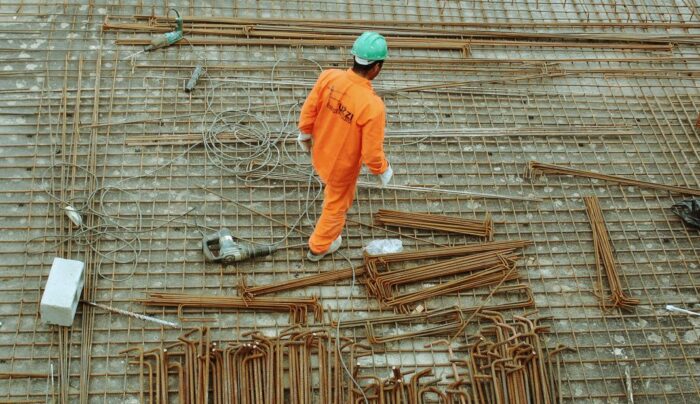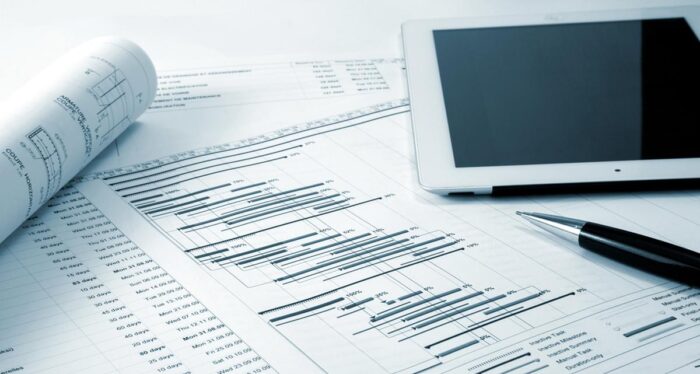
Construction project managers must coordinate numerous moving pieces. Their daily duties involve planning, budgeting, communicating with their stakeholders and overseeing various components.
One of the greatest challenges they face in managing their team members’ workloads is keeping track of who’s doing what and when, without appropriate tools.
Here is our guide on how to effectively run construction management projects.
1. Establish a Flow of Communication

Establishing clear channels of communication and points of contact from the start of any construction project is crucial to its success. Creating these internal and external communication methods will help minimize miscommunication while keeping all stakeholders up-to-date on regular updates.
Establishing relationships with your team members will also be instrumental in streamlining communication. Gaining their trust will make them more willing to contribute ideas and information which could benefit the project at hand.
Consider holding regular toolbox talks to foster open dialogue on difficult project issues and boost team morale. Open communication lines can reduce the risk of problems arising during the construction phase and keep projects on schedule.
2. Establish a Single Source of Truth
A single source of truth (SSoT), is an ultimate repository for organizational data and information. As an aggregate of project details, an SSoT guarantees all stakeholders can have access to identical data when making decisions.
Construction projects need accurate and current information for accountability and safety reasons. If, during renovation work, changes occur that impact the integrity of the building design or its integrity, accurate records must be available to track any such shifts.
Establishing this doesn’t need to be difficult; using the appropriate project management tool makes this easy. A centralized project management solution serves as the repository for daily work activities and therefore makes a natural home for everything related to the project at hand.
3. Develop a Schedule

Imagine trying to bake a cake or drive somewhere without first consulting directions; construction projects cannot proceed without first conducting an exhaustive construction scheduling process.
Begin by reviewing all contract documents and matching them to project drawings to gain a full understanding of the scope. The more precisely defined your scope is, the more realistic your schedule will be.
Add buffers (extra time built into your timeline for unavoidable delays) and investigate seasonal or site factors that could delay work, this will help avoid schedule overruns and make completion estimates more accurate.
Once your schedule is in place, assign all tasks to the relevant people and teams – this will hold them accountable and allow you to easily understand how a change in one task could impact others.
4. Create a Punch List
Striking it off your punch list as quickly and cost-effectively as possible is one of the key ways to avoid costly delays at the conclusion of any project. Implementing regular inspections that prioritize quality will reduce time-consuming rework and expensive repairs needed during the completion of work.
Selecting a construction punch list software that supports collaboration in the field allows team members to document issues immediately and address them instantly. Offline access may also prove invaluable for teams working outside of office environments or job site environments.
Owners, general contractors, and subcontractors must conduct pre-final walkthroughs together with both architects/designers to verify work was built as planned and up to standards. Utilizing a punch list during these inspections will hold everyone accountable and help avoid costly mistakes in the future.
5. Manage Changes

Change is inevitable on construction projects, and must be managed appropriately in order to prevent cost overruns, missed contract milestone payments, and delays in getting back on schedule with workflow. If they’re handled poorly they could lead to cost overruns, missed contract payments, and delays getting back to schedule with workflow.
Effective change management involves understanding their source and creating an orderly plan to deal with them. Template-based forms help reduce errors, establish digital paper trails, and implement changes more quickly so you can keep your project moving ahead.
Monitor the project schedule, budget, productivity, dangers, and unanticipated occurrences on an ongoing basis to detect issues as soon as they arise and adjust expected completion timelines accordingly. Utilize a final walkthrough checklist as another quality control measure before declaring your project complete.
6. Risk Management
Tackling construction projects is akin to navigating a ship in turbulent waters; the key lies in identifying the potential storms – the risks. Top-tier construction managers excel at sniffing out these uncertainties early on. Their modus operandi? Detailed risk assessments in the planning phase. Be it adverse weather conditions or material scarcity, these forward-thinking leaders prepare for everything. Through vigilant monitoring and timely tweaks, risks morph into golden opportunities, fostering growth and innovation.
7. Resource Allocation

Consider a construction project as a well-choreographed dance. The harmony lies in the impeccable coordination of resources – materials, equipment, and labor. Mastery in resource allocation starts with a robust project schedule, detailing tasks, timelines, and interdependencies. With smart resource dispersal, bottlenecks and delays become a thing of the past. A keen eye on resource consumption coupled with prompt adjustments keep waste at bay and asset utility at its peak. It’s a win-win: cost-saving and project efficiency gets a boost!
8. Quality Control
In the realm of construction, quality isn’t just desirable; it’s a prerequisite. A construction manager’s mission is to set and maintain uncompromising quality standards. Through persistent inspections and quality control, they ensure the output not just meets but exceeds client expectations. Immediate address of any discrepancies forestalls pricey rework, offering an enduring end product. Quality-focused management helps carve out a reputation of brilliance, earning clients’ trust.
9. Safety Measures
When it comes to construction projects, safety isn’t a priority; it’s the priority. It’s incumbent upon construction managers to foster a safety-first ethos. Through regular safety training and awareness drives, workers learn to sidestep accidents and injuries. Strict enforcement of safety rules safeguard everyone: workers, clients, and bystanders alike. Routine worksite inspections help nip potential hazards in the bud, ensuring a risk-free environment for all.











